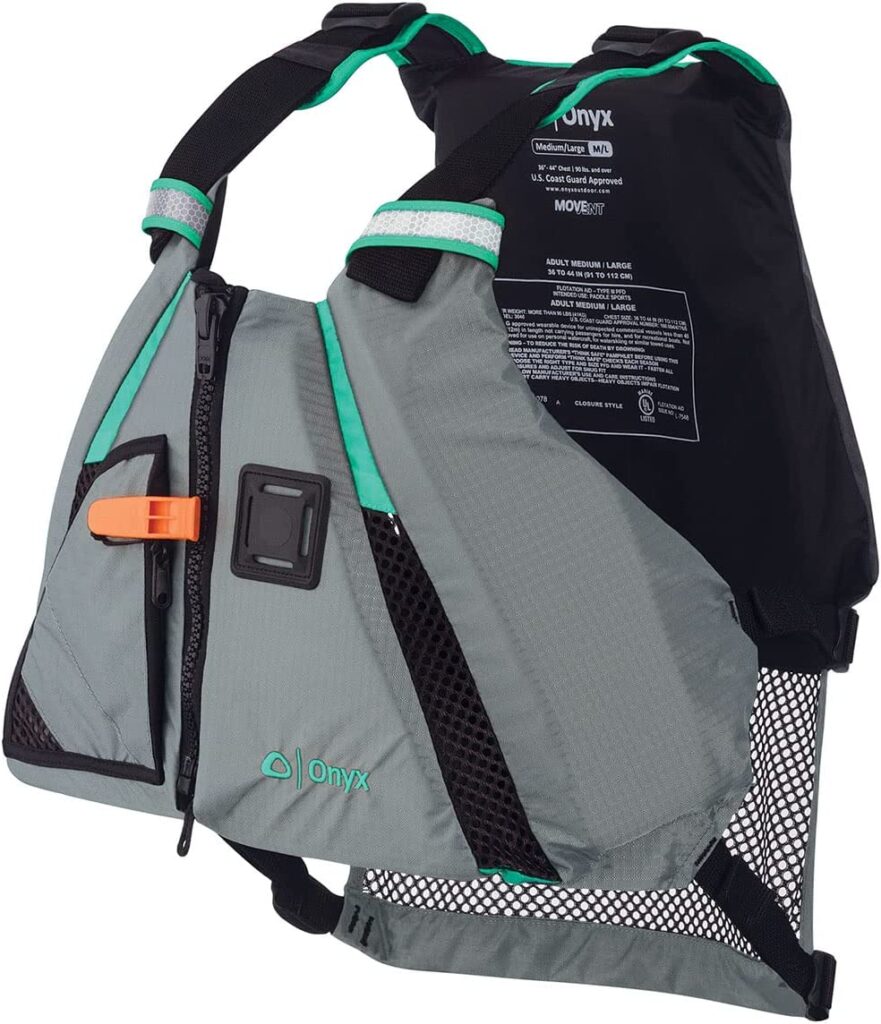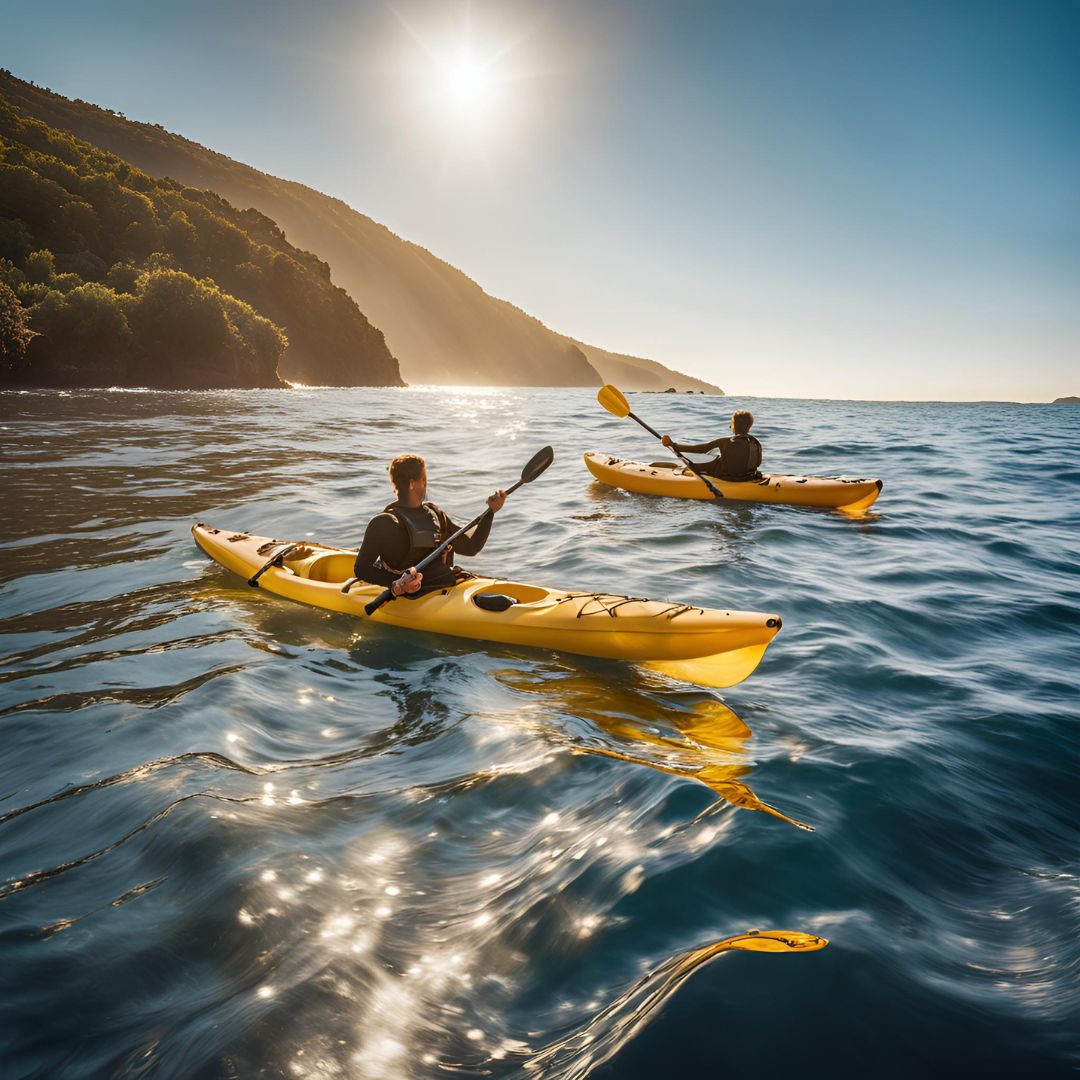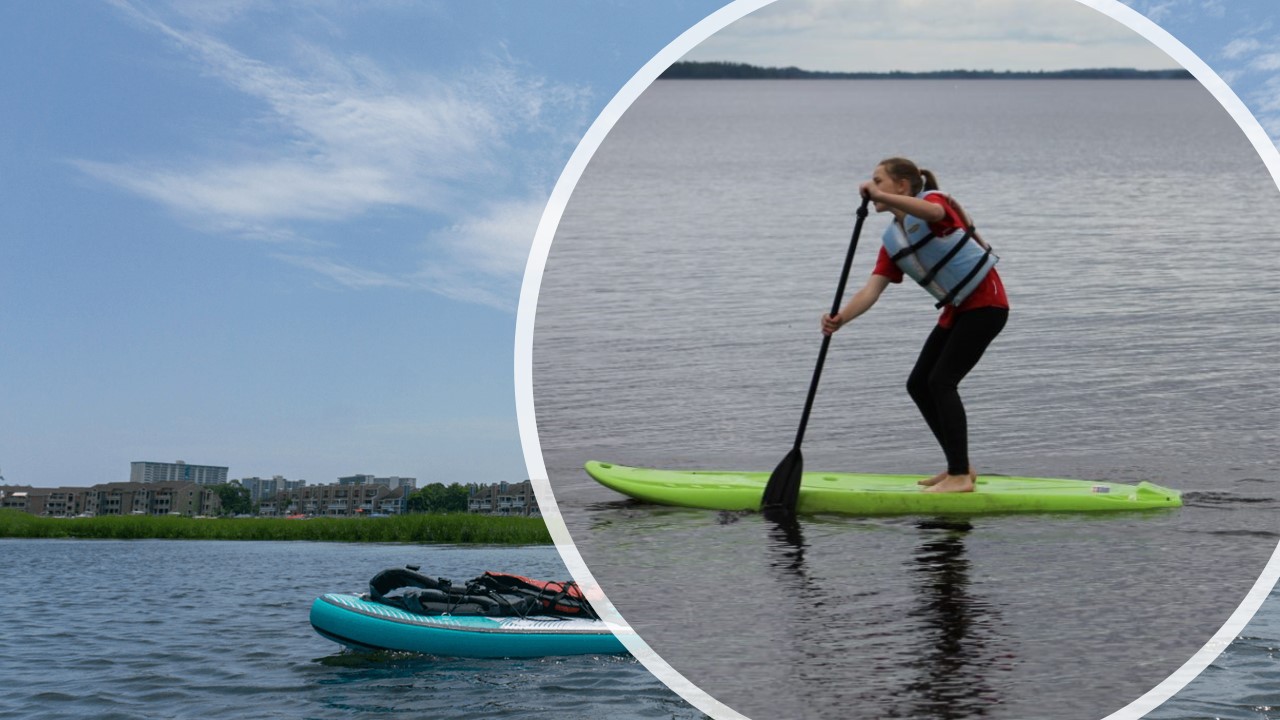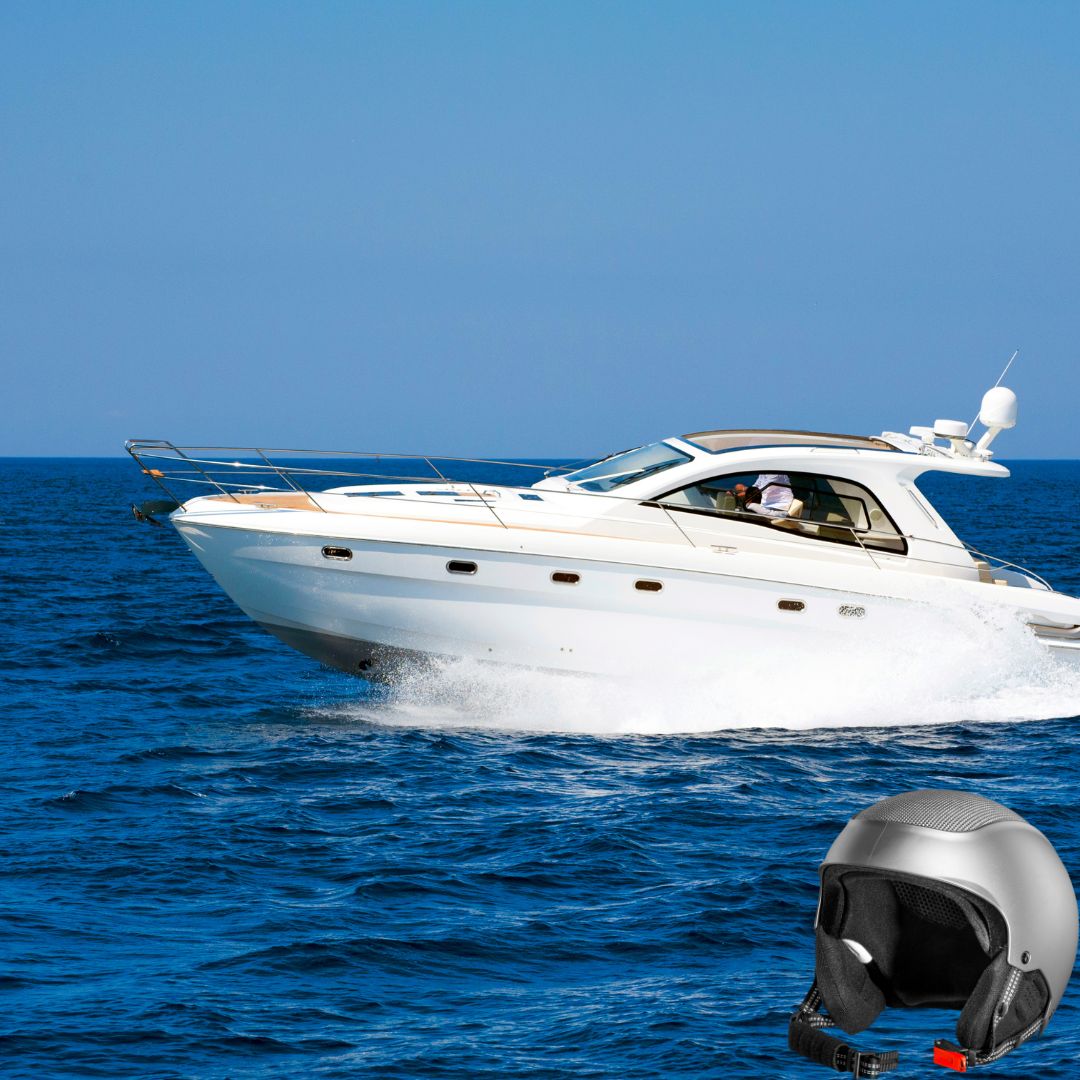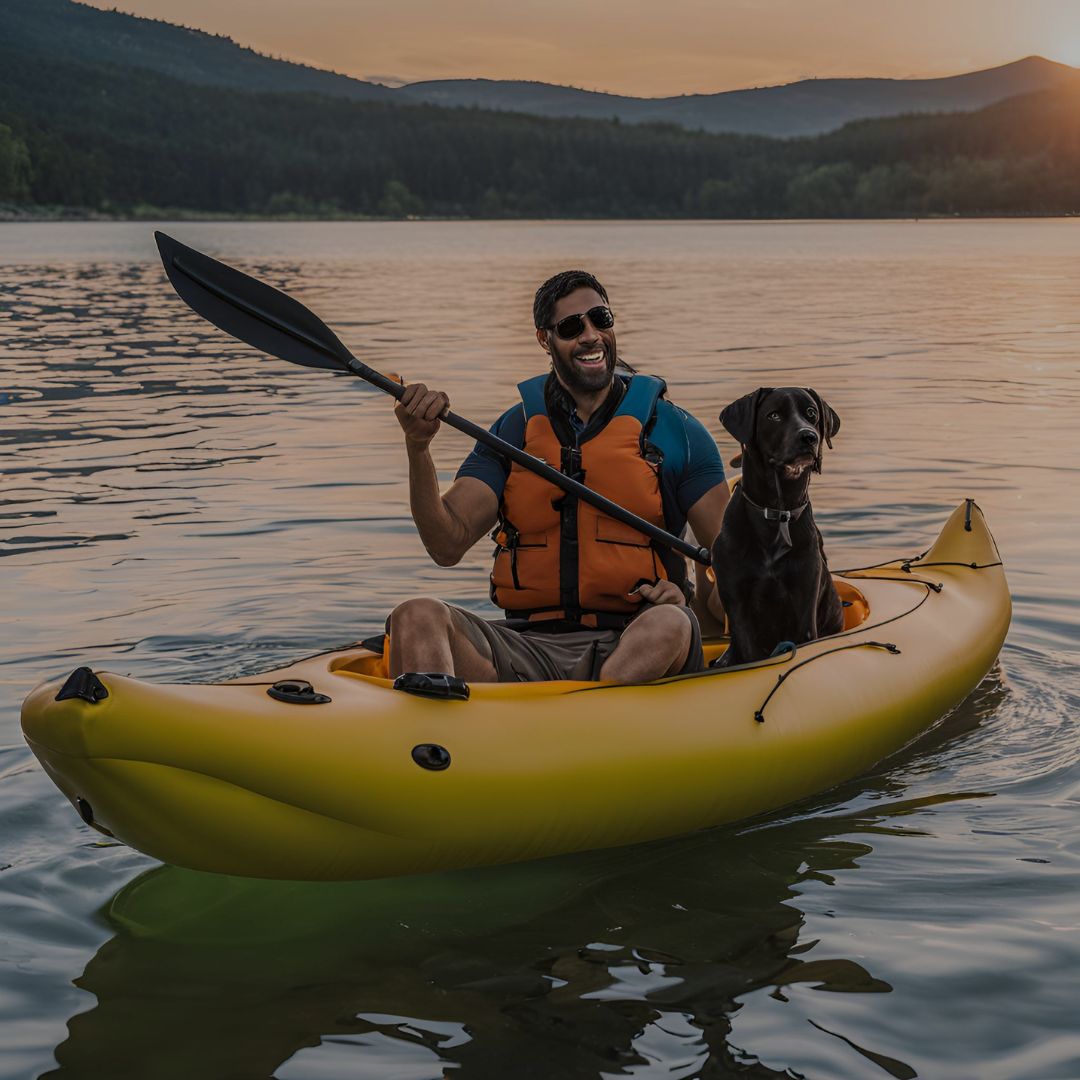Do You Need A Life Jacket To Kayak- Discover The Definitive Answer Now
Do you need a life jacket to kayak? The answer might just save your life and your wallet. Picture this: you’re gliding through serene waters, the sun shining overhead, the wind playing with your hair. It all seems perfect until you realize you’re breaking the law and risking hefty fines.
In many states in the US, not wearing a life jacket while kayaking can result in penalties that will leave your pockets considerably lighter. While the idea of kayaking without a life jacket might seem tempting, the consequences can be dire. Imagine finding yourself unexpectedly overturned in turbulent waters, struggling to stay afloat without the buoyancy assistance of a life jacket.
In this comprehensive article, we’ll delve into the world of kayaking safety and life jacket usage. We’ll start by exploring the legal implications of not wearing a life jacket while kayaking, highlighting specific state regulations and the potential fines you could face. Let’s get started!
Do You Need A Life Jacket To Kayak
Do you need a life jacket to kayak? The answer is a resounding YES! While wearing a life jacket depends on the regulations in your area, it is recommended to wear it to prevent unforeseen accidents.
In the United States, all 50 states require that you have a life jacket on board your kayak at all times. However, only a few states mandate wearing a life jacket at all times while kayaking.
Even if you are in a state where wearing a life jacket is not legally required, it is highly recommended for your safety. Life jackets can help prevent drowning, hypothermia, and other injuries during water emergencies.
When it comes to water safety, wearing a life jacket while kayaking is not only highly recommended but also a crucial requirement in many states. Failing to wear one not only puts your life at risk but can also lead to significant legal consequences that nobody wants to face.
Kayaking without a life jacket poses serious implications that should not be taken lightly. While the calmness of the water may deceive you, unexpected situations can arise at any moment.
Imagine suddenly encountering rough waters or being thrown off balance by an unforeseen obstacle. Without a life jacket, you risk being unable to stay afloat, leading to exhaustion, panic, and potentially even drowning.
Additionally, in many states, kayaking without a life jacket violates legal requirements and can result in fines or penalties that could put a damper on your kayaking adventures.
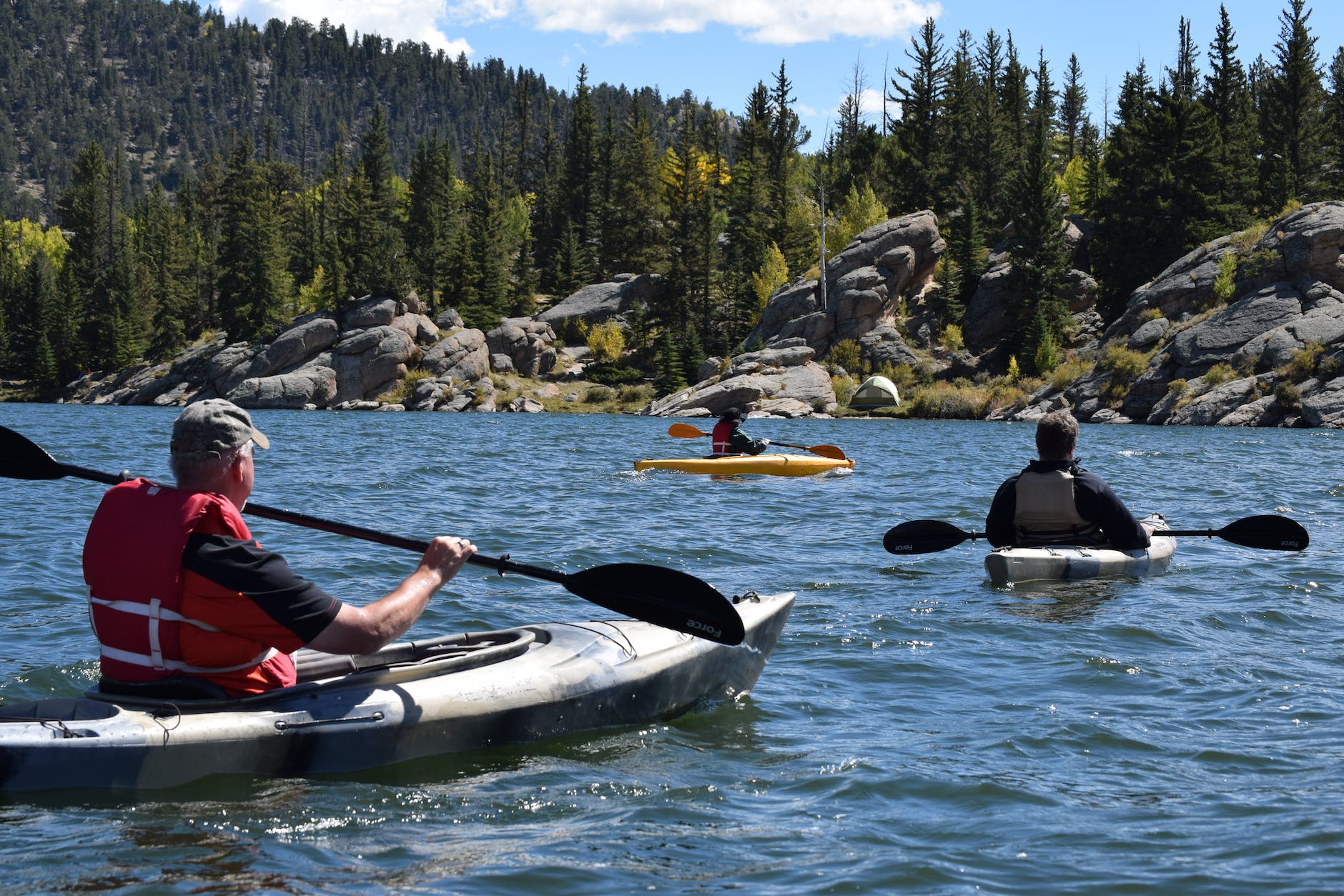
Do You Need A Life Jacket To Kayak: The Legal Requirements For Wearing A Life Jacket In Your State In The US
Here is how the regulation for life jackets to kayak works in the United States 50 states:
| State | Kayak Life Jacket Law | Minimum Age | Approved Life Jacket | Child PFD Requirement | Vessel Length Requirement | Fine for Not Wearing PFD |
| Alabama | Mandatory – one per person onboard | 8 and below | USCG-approved (type I, II, III) | Children should wear on at all times | All length | $25-$100 |
| Alaska | Recommended per person | Everyone under 13 | UCSG approved | Open vessel, deck or waterskiing | Any length | Up to $100 |
| Arizona | Recommended per person | 12 and below | UCSG approved | Underway on all kinds of vessel | Any length | NA |
| Arkansas | Mandatory per person on board | 12 and below | USCG-approved | All times | Any length | $50-$250 |
| California | Mandatory per person on board | 12 and below | USCG-approved | On recreational vessels under underway | Any length | $100-$150 |
| Colorado | Mandatory on a vessel less than 16 feet | 13 and below | USCG-approved | On vessels under 13 years | Any length | $25-$100 |
| Connecticut | Mandatory per person on board | 12 and below | USCG-approved | On vessels under 12 years | Any length | $75-$250 |
| Delaware | Recommended per person on board | 12 and below | USCG approved | On board all recreational vessel underway | Any length | $25 upward |
| Florida | Mandatory per person on board | 6 and below | USCG-approved | On recreational vessels under underway | Vessels less than 26 feet | $50-$100 |
| Georgia | Readily available per person on board | 12 and below | USCG-approved | On vessels proceeding | Any length | $100-$500 even to court |
| Hawaii | Mandatory for all vessels per person | 12 and below | USCG-approved | On all vessels | Any length | $50-$1000 |
| Idaho | Recommended per person on board | 14 and below on any boat 19’ | USCG approved | On all boats underway | Vessel 19’ or below | $84 or more |
| Illinois | Mandatory per person on board | 13 and below | USCG-approved | On vessels underway | Vessels below 26’ | $75 above |
| Indiana | Mandatory per person on board | 13 and below | USCG-approved | On any vessels | Any length | $25-$500 |
| Iowa | Mandatory per person on board | 13 and below | USCG-approved | On all recreational vessels underway | Any length | $50-$100 |
| Kansas | Recommended per person on board | 12 and below | USCG approved PFD Type I, II, III or V | Under 14 in USCG jurisdiction water and on board while underway | Any length | Up to $500 |
| Kentucky | Mandatory per person on board | 12 and below | USCG-approved | All times on vessels on deck and under way | Any length | $25-$100 |
| Louisiana | Must be worn by each person on board motor boat less than 16 feet | 16 and below | USCG approved | When the vessel is underway | Vessels below 26’ | $50 upward |
| Maine | Mandatory per person on board | 10 and below | USCG-approved | On vessels all times | Any length | $100-$500 |
| Maryland | Mandatory per person on board | 13 and below. 4 with PDF with additional safety features | USCG-approved | On vessels underway | Vessels below 21’ | $25-$500 and to court |
| Massachusetts | Mandatory per person on board | 12 and below | USCG-approved | On vessels underway | Any length | $50-$500 |
| Michigan | Mandatory per person on board | 6 and below | USCG-approved | While riding on the open deck of a vessel | Any length | $100-$500 |
| Minnesota | Mandatory per person on board | 10 and below | USCG-approved | When not below deck or anchored | Any length | $100-$1000 |
| Mississippi | Mandatory per person on board | 12 and below | USCG-approved | In open portion of a vessel | Vessels of length below 26’ | $25-$100 |
| Missouri | Mandatory per person on board | 7 below | USCG-approved | All times on all watercraft | Any vessel | $25-$1000 |
| Montana | Recommended per person on board | 12 downward and operator under 15 must wear a PDF at all times | USCG approved | While underway | Vessels below 26’ | $15 to $500 |
| Nebraska | Mandatory per person on board | 13 and below | USCG-approved | All times | Any length of vessel | $50-$250 |
| Nevada | Recommended per person on board | 13 downward | USCG approved | While on board any type of vessel | Any length | NA |
| New Hampshire | Mandatory per person on board | 12 and below | USCG-approved | Whilst onboard any vessel | Any length of vessel | $60-$250 |
| New Jersey | Mandatory per person on board | 12 downward | USCG-approved | Whilst onboard any vessel | Any length | $25-$100 |
| New Mexico | Recommended per person on board | 13 downward | USCG approved | Whilst underway | Any length | $50 to $500 |
| New York | Mandatory per person on board | 12 downward | USCG-approved | Whilst underway | Vessel 65’ downward | $25-$250 |
| North Carolina | Mandatory for vessel to have one per person on board | 13 downward | USCG-approved | Whilst underway | Any length vessel | $25-$250 |
| North Dakota | Recommended for all non-motorized vessels. One PFD per person on board | 10 downward | USCG approve | Whilst underway | Any vessel below 27’ | NA |
| Ohio | Mandatory for vessel to have one per person on board | 10 downward | USCG-approved | Whilst Onboard vessels | Any vessel below 18’ | $100-$500 and court |
| Oklahoma | Recommended for vessel to have one per person on board | 13 downward | USCG approved | Whilst underway | Any vessel below 26’ | $201 upward |
| Oregon | Mandatory for vessel to have one per person on board | 12 downward | USCG-approved | Whilst underway and on open deck | Any length vessels | $250-upward |
| Pennsylvania | Mandatory for vessel to have one per person on board from November to April | 12 downward | USCG-approved | Whilst underway | Vessels 20’ downward | $75-$200 |
| Rhode Island | Mandatory for vessel to have one per person on board | 13 downward | USCG-approved | Whilst underway | -Vessels below 65’ | $50-$100 |
| South Carolina | Mandatory for vessel to have one per person on board | 12 downward | USCG-approved | All times whilst onboard | Vessels below 16’ | $25-$200 |
| South Dakota | Recommended for kayaks, canoes and paddleboards to have one per person on board | 7 downward | USCG approved | Any vessel with more than no-wake speed | Any vessel | Up to $100 |
| Tennessee | Recommended for paddleboards, kayaks and canoes to have one per person on board | 12 downward | USCG approved | Whilst on deck and underway | Any vessel | $50 upward |
| Texas | Mandatory for paddleboards, canoes and kayaks to have one per person on board | 13 downward | USCG-approved | Whilst on deck and underway | Vessels below 26’ | $25-$500 |
| Utah | Recommended for paddleboards, canoes and kayaks to have one per person on board | 13 downward | USCG approved | Whilst on deck and underway | Vessels below 26’ | Up to $1000 |
| Vermont | Mandatory for paddleboards, canoes and kayaks to have one per person on board | 12 downward.16 downward while sailboarding | USCG-approved | Whilst on deck and underway | Vessels below 26’ | $100-$500 |
| Virginia | Mandatory for paddleboards, canoes and kayaks to have one per person on board | 13 downward | USCG-approved | Whilst onboard and underway | – | $25-$250 |
| Washington | Mandatory for paddleboards, canoes and kayaks to have one per person on board | 12 downward | USCG-approved | Whilst underway | Vessels below 19’ | $87-$257 |
| West Virginia | Recommended for paddleboards, canoes and kayaks to have one per person on board | 12 downward | USCG approved | Whilst underway | Any vessel | $20 upward |
| Wisconsin | Mandatory for paddleboards, canoes and kayaks to have one per person on board | 13 downward | USCG-approved | Whilst underway | Any vessel | $25-$200 |
| Wyoming | Recommended for paddleboards, canoes and kayaks to have one per person on board | 13 downward | USCG approved | Whilst underway | Any vessel | $110 upward |
Benefits Of Wearing A Life Jacket While Kayaking
Wearing a life jacket while kayaking offers numerous safety benefits that can make a significant difference in critical situations. Let’s explore some of these advantages:
1. Increased Buoyancy
One of the primary benefits of wearing a life jacket is the added buoyancy it provides. In the event of an accident or capsize, a life jacket keeps you afloat, making it easier to stay above water even if you’re injured, exhausted, or unable to swim.
The inherent buoyancy of a properly fitted life jacket ensures that you remain supported and reduces the risk of submersion or drowning.
2. Improved Visibility
Life jackets are designed with vibrant colors and reflective materials, enhancing your visibility to others on the water. In case of an emergency or when paddling in busy waterways, a brightly colored life jacket helps boaters, rescue teams, or other kayakers spot you more easily.
This increased visibility can be crucial in preventing accidents, expediting rescue efforts, and ensuring your safety.
3. Protection from Hypothermia
Even in relatively warm waters, the risk of hypothermia should never be overlooked. When exposed to cold temperatures, your body can rapidly lose heat, leading to a potentially life-threatening condition.
Wearing a life jacket not only helps keep you afloat but also provides an additional layer of insulation, helping to retain body heat and reducing the risk of hypothermia. This is especially important during longer kayaking trips or in colder climates.
The Best Life Jacket To Kayak (Kayak Vest)
1. Onyx MoveVent Dynamic Paddle Sports Life Vest
This life jacket is designed specifically for paddle sports, offering a comfortable and secure fit. It features mesh back and shoulder ventilation panels for enhanced breathability and freedom of movement. The Onyx MoveVent Dynamic is USCG-approved and includes multiple pockets for storing small essentials.
2. Stohlquist Edge Personal Flotation Device
The Stohlquist Edge PFD is known for its sleek design and excellent mobility. It offers a low-profile fit and features adjustable shoulder and side straps for a customized and secure fit. This life jacket is constructed with durable materials and includes convenient pockets and reflective accents.
3. NRS Chinook Fishing Kayak PFD
Ideal for kayakers who also enjoy fishing, the NRS Chinook Fishing Kayak PFD provides comfort, functionality, and ample storage options.
It features multiple pockets, including a large tackle box pocket, and attachment points for essential gear. The high-back design accommodates most kayak seats and offers excellent back support.
4. Astral V-Eight Life Jacket
The Astral V-Eight is a popular choice among kayakers seeking a lightweight and versatile life jacket. It combines comfort with ample ventilation, thanks to its mesh liner and airflow system.
The V-Eight has adjustable shoulder and side straps, providing a secure fit, and includes handy pockets for storing small items.
5. O’Neill Men’s Superlite USCG Life Vest
Designed for men, the O’Neill Superlite Life Vest offers a blend of performance, comfort, and affordability. It is USCG-approved and features a lightweight and flexible foam core.
The vest’s minimalistic design allows for freedom of movement, making it suitable for various water activities, including kayaking.
RELATED: What Is The Best Sunscreen For Beach – Top 10 Sunscreen Recommended By Experts
Various Kayaking Scenarios (Do You Need A Life Jacket To Kayak)
Recreational Kayaking
Whether you’re gliding along a calm lake or leisurely exploring a peaceful river, recreational kayaking offers a chance to unwind and enjoy nature. However, even in these seemingly tranquil settings, wearing a life jacket is essential.
Consider the scenario of a kayaker who loses balance and falls into the water unexpectedly. With a life jacket on, they can maintain buoyancy and stay afloat, preventing potential panic or exhaustion. This is especially crucial for beginners or those who are not confident swimmers.
Whitewater Kayaking
Whitewater kayaking is an exhilarating sport that involves navigating through fast-flowing rivers and challenging rapids. In this adrenaline-filled activity, the risks are heightened, making a life jacket an absolute necessity.
Sea Kayaking
Sea kayaking offers breathtaking views and the opportunity to explore coastal regions or venture out into the open ocean. However, the sea can be unpredictable, with changing weather conditions and potential hazards.
Kayaking with Children
Kayaking with children requires extra precautions to ensure their safety. Without a life jacket, kids can fall into the water and result in drowning.
RELATED: Water Sports Myrtle Beach: Discover the Thrill And Have Fun
The Different Types Of Life Jackets Available For Kayaking (Do You Need A Life Jacket To Kayak)
When it comes to choosing a life jacket for kayaking, there are several options available to suit different preferences and needs. Here are the three main types of life jackets commonly used by kayakers:
1. Foam-Filled Vests
Foam-filled life jackets, also known as inherently buoyant or solid vests, are a popular choice for kayaking. These vests are made of durable materials and have built-in buoyancy provided by foam inserts.
They offer reliable flotation without the need for any additional action, such as inflation or activation. Foam-filled vests are known for their simplicity, reliability, and affordability, making them suitable for a wide range of kayakers, including beginners and recreational paddlers.
They provide consistent buoyancy and are effective in keeping you afloat in case of an emergency.
2. Inflatable Vests
Inflatable life jackets have gained popularity in recent years due to their lightweight and compact design. These vests feature an inflatable chamber that can be manually or automatically inflated when needed.
Manual inflation involves pulling a cord or pressing a button, which activates a CO2 cartridge to inflate the vest. Automatic inflation utilizes a mechanism that detects water immersion and inflates the vest automatically.
Inflatable vests are comfortable to wear and offer freedom of movement while paddling. However, it’s important to note that they require regular maintenance and inspection to ensure proper functioning and to keep the inflation mechanism in good condition.
3. Hybrid Vests
Hybrid life jackets combine the features of foam-filled and inflatable vests, offering the benefits of both types. These vests typically have foam panels for inherent buoyancy and an inflatable chamber as an additional buoyancy option.
Hybrid vests provide excellent comfort and mobility, and they allow users to choose between foam flotation and inflatable flotation based on their specific needs or preferences.
They offer versatility for different kayaking situations and are particularly suitable for those who desire the added buoyancy of foam along with the option for inflation.
RELATED: 10 Best Beach Chair And Umbrella
Proper Fit Life Jacket And Maintenance (Do You Need A Life Jacket To Kayak)
Selecting a properly fitting life jacket and maintaining it in good condition is vital for ensuring your safety while kayaking. Here’s a guide on achieving the right fit, adjusting and securing your life jacket correctly, and maintaining it for optimal performance:
1. Choosing The Right Size
Life jackets come in various sizes, so it’s essential to select one that fits you properly. Refer to the manufacturer’s sizing chart, which typically considers your chest size and weight. Try on the life jacket and ensure it feels snug but not overly tight. Adjust the straps and closures to achieve a secure fit.
2. Adjusting And Securing The Life Jacket
Once you’ve put on the life jacket, follow these steps to adjust and secure it correctly:
– Shoulder Straps: Adjust the shoulder straps so that they are snug but not restrictive. The life jacket should not ride up excessively when you lift your arms.
– Chest and Waist Straps: Fasten the chest and waist straps securely, ensuring a snug fit. The straps should be tight enough to prevent the life jacket from slipping off but still allow for comfortable breathing and movement.
– Crotch Strap (if applicable): Some life jackets, especially for children, come with a crotch strap for added security. Fasten and adjust the crotch strap to ensure the life jacket stays in place during water activities.
3. Maintaining And Inspecting Your Life Jacket
To keep your life jacket in optimal condition, follow these maintenance and inspection tips:
– Rinse After Use: After each kayaking session, rinse your life jacket with fresh water to eliminate any sand, salt or debris. Avoid using harsh chemicals or abrasive cleaners that could damage the fabric or foam.
– Air Dry Properly: Hang the life jacket in a well-ventilated area to dry thoroughly before storing it. Avoid subjecting it to direct sunlight for long periods as it may cause fading or deterioration.
– Inspect for Wear and Tear: Regularly inspect your life jacket for every sign of wear, tear, expiry or damage to avoid drowning. Look for frayed straps, loose stitching, or punctures in the fabric. Check the buckles, zippers, and inflation mechanisms (if applicable) to ensure they are functioning properly.
– Replace When Necessary: If your life jacket shows significant signs of wear, such as foam degradation, torn fabric, or malfunctioning components, it’s time to replace it.
Additionally, if the life jacket has been involved in a significant impact or has been submerged for an extended period, it may no longer provide reliable buoyancy and should be replaced.
Remember, a properly fitting and well-maintained life jacket is your best defense in the water. By following these guidelines, you can ensure that your life jacket is always ready to provide the necessary buoyancy and support for a safe and enjoyable kayaking experience.
Tips For Wearing A Life Jacket Comfortably And Effectively
Wearing a life jacket comfortably and effectively is crucial for your safety while kayaking. Here are some tips to help you achieve a comfortable and secure fit:
1. Choose the Right Size: Select a life jacket that fits you properly. Refer to the manufacturer’s sizing chart and consider your weight and chest size. Avoid choosing a life jacket that is too large or too small, as it may compromise its effectiveness and comfort.
2. Adjust the Straps: Take the time to adjust the straps on your life jacket to achieve a snug fit. Start with the shoulder straps, ensuring they are not too tight or too loose. Adjust the chest and waist straps next, making sure the life jacket stays in place without restricting your movement or breathing.
3. Lift Your Arms: Lift your arms and move around to check if the life jacket remains in position. It should not ride up excessively or hinder your mobility. If the life jacket shifts significantly, readjust the straps until you achieve a secure fit.
4. Don’t Overinflate (Inflatable Life Jackets): If you’re wearing an inflatable life jacket, ensure it is not overinflated. Follow the manufacturer’s instructions for manual inflation or check that the automatic inflation mechanism is properly set. Overinflation can cause discomfort and restrict movement, so aim for a firm but comfortable inflation level.
5. Secure All Buckles and Fastenings: Double-check that all buckles, zippers, and fastenings are securely closed and properly aligned. This ensures the life jacket remains in place during water activities.
6. Wear It Properly: Put on your life jacket before entering the water and keep it securely fastened throughout your kayaking adventure. It should be worn over any additional layers or clothing. Avoid adjusting or removing the life jacket while in the water unless absolutely necessary.
7. Regularly Check for Adjustments: Periodically reassess the fit of your life jacket during breaks or after extended periods of paddling. Straps may loosen over time or with movement, so make any necessary adjustments to maintain a snug and secure fit.
Kayak Without Life Jacket
Kayaking without wearing a life jacket is strongly discouraged and poses significant risks to your safety. A life jacket, also known as a personal flotation device (PFD), is designed to keep you buoyant and afloat in the water, providing a crucial layer of protection in case of an accident or unexpected circumstances.
Here are some important reasons why you should never kayak without wearing a life jacket:
1. Safety in Emergencies: Accidents can happen, regardless of your skill level or experience. If you were to capsize, get caught in strong currents, or encounter unexpected obstacles, a life jacket would keep you afloat and reduce the risk of drowning.
It provides crucial buoyancy, giving you precious time to either self-rescue or wait for assistance.
2. Unpredictable Water Conditions: Water conditions can change rapidly and be influenced by factors such as wind, tides, and currents. Even calm waters can become turbulent due to unforeseen circumstances.
Wearing a life jacket ensures that you are prepared for unexpected situations and helps mitigate the potential dangers posed by varying water conditions.
3. Fatigue or Injury: Paddling for extended periods or encountering challenging conditions can lead to fatigue or injuries. Exhaustion can compromise your ability to swim or stay afloat, especially if you’re not a strong swimmer.
A life jacket provides added buoyancy, allowing you to conserve energy and stay safe even if you’re tired or injured.
4. Compliance with Regulations: In many jurisdictions, wearing a life jacket while kayaking is a legal requirement.
Violating these regulations may result in fines or penalties. It is important to familiarize yourself with the specific laws and regulations in your area to ensure compliance and prioritize your safety.
5. Setting a Responsible Example: Wearing a life jacket sets a responsible example for others, especially if you’re kayaking with friends, family, or children.
By demonstrating the importance of safety measures, you encourage others to prioritize their own well-being and create a culture of safety in the kayaking community.
The Bottom Line On Do You Need A Life Jacket To Kayak
In conclusion, the answer to the question, “Do you need a life jacket to kayak?” is an emphatic “Yes!” Your safety should always be the top priority when embarking on a kayaking adventure. Wearing a life jacket is not only a legal requirement in many jurisdictions but also a smart and responsible choice.
Whether you’re enjoying recreational kayaking, tackling challenging whitewater rapids, exploring the vastness of the sea, or kayaking with children, a life jacket is an essential piece of equipment that can save lives.
